

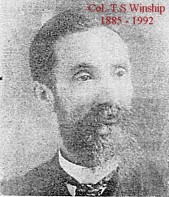
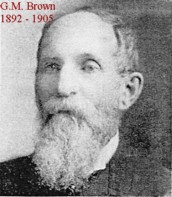
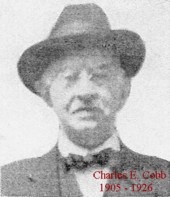
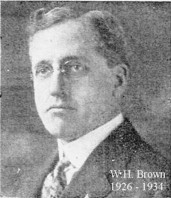
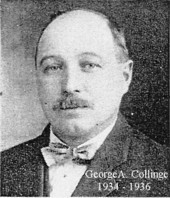
THE FIRST white settlers came to Conneaut just 151 years ago this summer and began to build their cabins along the creek. For just over half the intervening period The Conneaut Banking and Trust Company has continued their work of developing the resources of the district.
THE PIONEERS chose their homesites because Conneaut Creek - the Seneca name means "River of Many Fish" -promised adequate food supply if and when hunting failed. The City of today testifies to the wisdom of their choice, but fat farmland, rich in fruit, truck and dairy cattle has long since surpassed the fisheries in importance while thriving industry has developed around the site of the first grist mill of 1809.
FIRST INDUSTRIES
A furnace which made cast iron stoves in 1830; a machine shop and foundry in 1840; a cheese factory in 1869. But from 1818 the little town was a ship building center, launching a large number of brigs, schooners and sloops for the lake trade and, in 1834, one of the finest steamers on the great lakes. Lumber, staves, ax and hatchet handles supplied the first outgoing cargoes and life became easier because of what the ships brought back. In 1852, however, the completion of the Lake Shore Railway hit the water-borne trade hard. Soon, the improved transportation encouraged the district's prosperous development.
By 1871, Conneaut was a busy country town with two carriage plants, a couple of saw mills, a cabinet and furniture factory, two flour mills, two paper mills and a canning plant. Then there were five general merchandise stores and six groceries, clothing, millinery and shoe stores, drug, hardware and furniture stores, three hotels and as many restaurants, three butchers, two harness shops and a printer.
TRADE CENTER
Such a community might not have a foot- of paved streets and be without water, sewer or lighting system but it was the trade center for a prosperous farming district on both sides of the State Line and it needed a bank.
IN THE SPRING of 1870 a group of businessmen headed by Samuel Hayward applied to the General Assembly for a charter, the application bearing the signatures of Isaac Skinner, R. T. Morrison, Cyrus Cleveland, Z. H. Thompson and E. A. Keyes. By mid-summer 1871, the organizers had sold shares of stock at $250 each to raise the authorized capital of $50,000 and The Conneaut Mutual Loan Association opened for business on Tuesday, July 18.
ITS FIRST HOME was in a remodeled store room at the Northeast corner of Main and Washington streets directly across Main Street from the present location. The Association continued to occupy these quarters for an even twenty years, and to grow steadily.
THE FIRST seven years the capital stock was increased from $50,000 to $80,000; surplus and undivided profits reached $3600 and $4474 respectively; deposits rose to $91,664 and real estate and other loans to $158,868.
BANKING GROWTH
Samuel Howard served as President until his death in 1885 and was succeeded by Col. T. S. Winship, who held that office for seven years. During his term of office the Association's growing business made larger quarters necessary and in 1891, it removed to the new Stanley Block at the Northwest corner of Main and Washington: G. M. Brown became President in 1892 and served until 1905 when Charles E. Cobb took his place. In 1906, the Association reorganized as The Conneaut Mutual Loan & Trust Company under a charter granting trust powers. That same year the institution purchased the property at the Southeast Corner of Main and Washington and remodeled the building which it has occupied ever since and which has just been enlarged to accommodate the expanding business Conneaut's growth is creating. The new charter, in addition to authorizing a general commercial banking business, conferred complete trust powers and granted the right to supply safe deposit service.
MR. COBB served until 1926 and gave place to W. H. Brown who held office until 1934, when George A. Collinge became President. His successor, W. T. Ross, who had previously served as Secretary and Treasurer, now heads the bank.
IN JANUARY, 1935, the institution had changed its corporate title for the second time to become The Conneaut Banking and Trust Company.
FOR MORE THAN three quarters of a century the bank has not only kept pace with Conneaut's progress; it has also anticipated the needs of the community and developed its facilities and service to encourage the prosperous progress of the district.
THE founders had faith in a little country town. The institution which they established has helped to make that town a thriving industrial city, an important railroad center, a great ore and coal port and the preferred shopping center of a rich farming district.
OUR NEW HOME
Now The Conneaut Banking and Trust Company has again testified to its faith in the community's future.
IN ORDER BETTER to serve the steadily increasing number of its customers, the bank has completely remodeled its quarters, practically doubling the size of its banking room and installing the most modern of fixtures and equipment.






